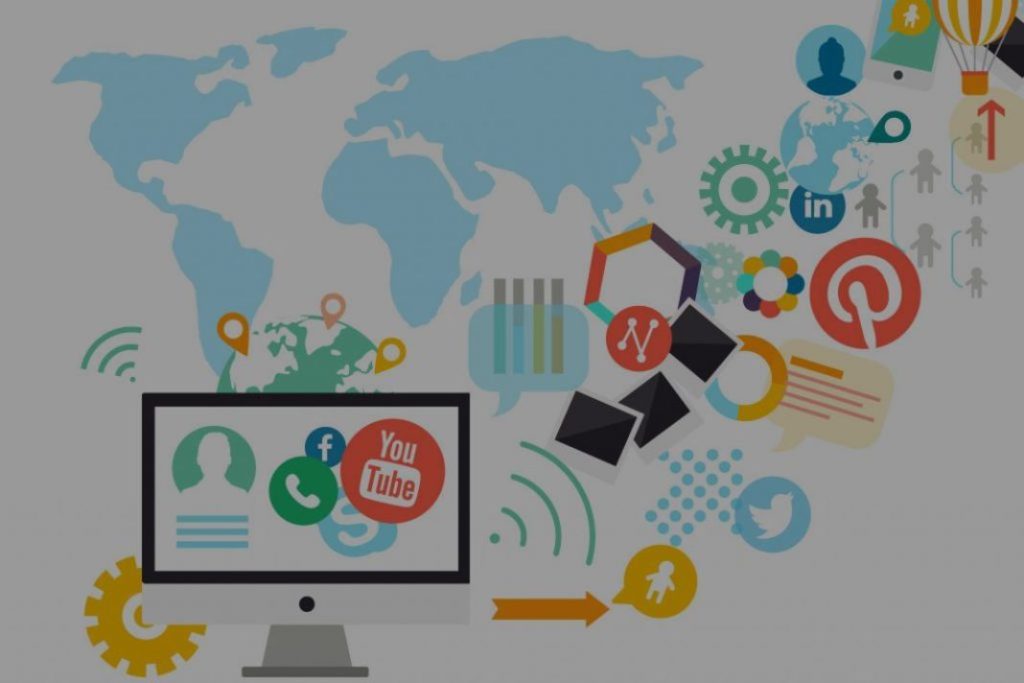How to Create an Effective Social Media Content Strategy
An effective social media content strategy offers advantages including attracting more prospects & customers & expanding brands' reach to optimize conversions.

Introduction
In an era of the Internet of Things (IoT), social media marketing (SMM) is the greatest boon to marketers.
An effective social media content strategy offers several advantages including attracting an increased number of prospects and customers and expanding brands’ reach to a huge number of online audiences to generate measurable and cost-effective conversions.
Thus, undeniably, a winning social media content strategy holds the power to convert more followers into leads. An effective content strategy on social media holds the key to align your goals with the pain points of the customers to optimize your revenue goals.
According to Smart Insights, 80% of the companies online perceive that they deliver exceptional social media content service while only 8% of the customers say they agree.
Thus, there is clearly a huge difference between customers’ expectations of quality content on the social platforms and what the brands are creating.
As easy as it may appear, standing out and yet making a positive impact with your content strategy on several social media platforms isn’t an easy task. While social media marketing content, when developed and deployed in the correct way always guarantees positive ROI getting started successfully isn’t a cakewalk.
Ways to Refine Your Content Strategy for Social Platforms
There is a sere amount of competition on all popular social media platforms and you need to put in some effort to come up with an impeccable content strategy – in terms of both your organic and paid endeavors, to develop positive relationships with your customers, engage with your audience base and increase sales.

Image Source: Sprout Social
In this post we will guide you on creating effective social media content strategy:
1. Set Your Priorities and Conversion Goals
Entering into social media marketing (SMM) game starts with proper planning. The first step to create a winning strategy is to establish your SMM objectives and goals. You must properly choose your conversion goals, as well.

Image Source: SugarSpun Marketing
Deploy the following strategies:
- Keep you Social Media Marketing Goals S.M.A.R.T – Specific, Measurable, Attainable, Relevant, Time-bound
- Track meaningful metrics and align them with your business KPIs
- Identify your vanity metrics and understand that they can’t be aligned with real value, for example, the number of followers
- The engagement metrics such as the Click-Through Rate (CTR) and Cost-per-Click (CPC) and the conversion metrics such as Visit Conversion Rate and Visitor Conversion Rate are the ones that can be directly aligned with your business bottom-line goals, and reflect on the true value
2. Research Your Audience Preferences
At the very heart of an effective social media content strategy lies your audience preferences. You should know who are your audiences and what demographics they fall under.
Interestingly, your social media marketing strategy isn’t just about knowing the pain-points of your prospects and customers and what product history they have with you. Marketers should also learn what interests their audiences.
The focus should be on the following points:
- Create a proper hypothetical persona
- Segment your target audience by age, location, average income, typical job title, interests and more
- Know the influencers your audiences follow, the books they are reading and the forms of content they are engaging with on social media platforms
- Learn how to target and engage your audiences on social media
- Engage your audiences to leave positive reviews and encourage positive word-of-mouth
- The focus should be on the creation of user-generated content and you can consider rewarding your users for creating content
- User-generated-content (UGC) is amongst the most premium type of content for optimizing conversions
3. Plan Your Social Media Content
Once you define your marketing goals, it’s time to create your social media calendar.
Your content should boost your social media optimization flow.

For planning your social media content, you can follow the steps below:
- Conduct timely social media content audits
- Use tools such as Google Analytics for reviewing how your content is performing
- You should analyze the performance of your social media content and blog posts over a period of time
- Analyze extensively what type of content is generating maximum traction
- Keep on shuffling your content strategy according to your audience preferences
- Focus on creating a unique brand voice, as shown in the example below:
4. Analyze Your Competition
Analyzing your competition or competitive benchmarking is an excellent way to optimize your social media conversions.
Marketers can follow the steps below to conduct a competitive analysis:
- Understand the strategy of your competitors
- Employ social media listening tools such as Hootsuite
- Deploy similar product promotions and advertising that your competitor is already successful with but don’t blindly emulate their strategy; work on your strategy and figure out what works best for you
5. Test-Run Your Social Media Content
Split-testing should be one of the essential ingredients of your social media content strategy.
Split testing allows marketers to deduce the following things:
- What’s working for their social media strategy and what’s not
- Who are the people engaging with your content and what type of content do they prefer
- What are the networks being used by your target audience groups
- How does your social media strategy align with those of your competitors or in what respects are they different
6. Learn About the Latest Trends and Optimize Your Social Media Profiles
Learn how small and medium-sized businesses and those similar to you are best using their social platforms. You should keep abreast of the latest trends and do the following:
- You should define your strategy for each of the social media platforms
- Use social tools to communicate with your customers
- Write proper statements to reflect on your vision
- Optimize your profile for different social media platforms
7. Analyze the most Successful Brands on Social Media
Brands should draw inspiration from other businesses that are very successful with their social media strategy already.
You can deploy the following strategies:
- Create your Social Media Success Stories
- Analyze the award-winning accounts and campaigns
- Inspect what your favorite brands are doing superbly on social media
8. Create User-Generated Content (UGC)
User-Generated Content (UGC) is any form of content including images, videos, text, and video that has been posted by users on online platforms such as social media channels and wikis.

Marketers should encourage their audiences to create more user-generated content by:
- Auditing existing fan photos
- Figuring out the customer trends
- Adopting unique hashtag strategies
- Promoting strong CTAs in key locations
- Inclusion of signage in your store
- Hosting events, and
- Interacting with the Influencers
- Rewarding your fans for creating content
- Featuring the followers with exceptional content on your social media platforms, and
- Inspecting how other brands leverage UGC as social currency
9. Opt for an 80-20 Content Mix Formula for Informational and Promotional Content
Brands can use 80% of their social media content to inform, educate, or inform their audience groups. Up to 20% of content can be used for direct promotion of the brands.
Marketers should decide:
- What percentage of social content will fetch referral traffic
- What percentage of content will be posted from other popular sources
- What percentage of content will be aligned with the lead generation goals and what percentage will be published to reflect exclusively on the company culture
- Accordingly, marketers can prepare a social media calendar with all the right forms of the content mix
10. Monitor, Review and Optimize
Marketers should evaluate and adjust their social media strategy.
You will need to do the following to evaluate and optimize your social media content strategy:
- Monitor your key performance indicators (KPIs)
- Review and test your performance KPIs
- Generate predictive insights to foretell your conversions and figure out ways to optimize them
- Include new tools, goals, and plans in your social media calendar
- Deduce the most common insights from your analytics reports and use them to improve your storytelling
Advantages of an Effective Social Media Content Strategy
An effective content strategy on social media platforms can benefit your brands in a number of ways:
- It gives your brand a voice and substantiates your subject-matter-expertise
- Your brand becomes more visible and has a global appeal
- With an entirely organic approach, you can expand the reach of your brand
- Your content can help people in making buying decisions and can inspire you to be creative
- You get some excellent and quality referral traffic and can be more creative
- You can increase your visibility on search engines and thus can improve your reach to your target audience groups
- You can improve your domain authority and social traffic
- You improve your conversion potential, brand reputation, and recognition
- You improve your customer relationships, lower the costs of customer acquisitions and finally increase your business value
Wrapping Things Up
An effective content strategy on social media platforms helps brands sell their products or services by attracting their target audiences and convincing them that they have an effective solution to offer. Effective content strategy on social media platforms can actually help you boost your content marketing endeavors and drive more sales. Thus you can establish your brand, reputation, and quality.
Valasys Media is a well-renowned name in helping B2B clients with an array of services including lead generation, lead nurturing, account-based marketing, list building services, contact discovery services, content syndication services, event promotion, appointment setting, business intelligence, and CRM services to help them optimize their conversion goals.
Contact us and we will help you to maximize your reach to your target audience groups.



